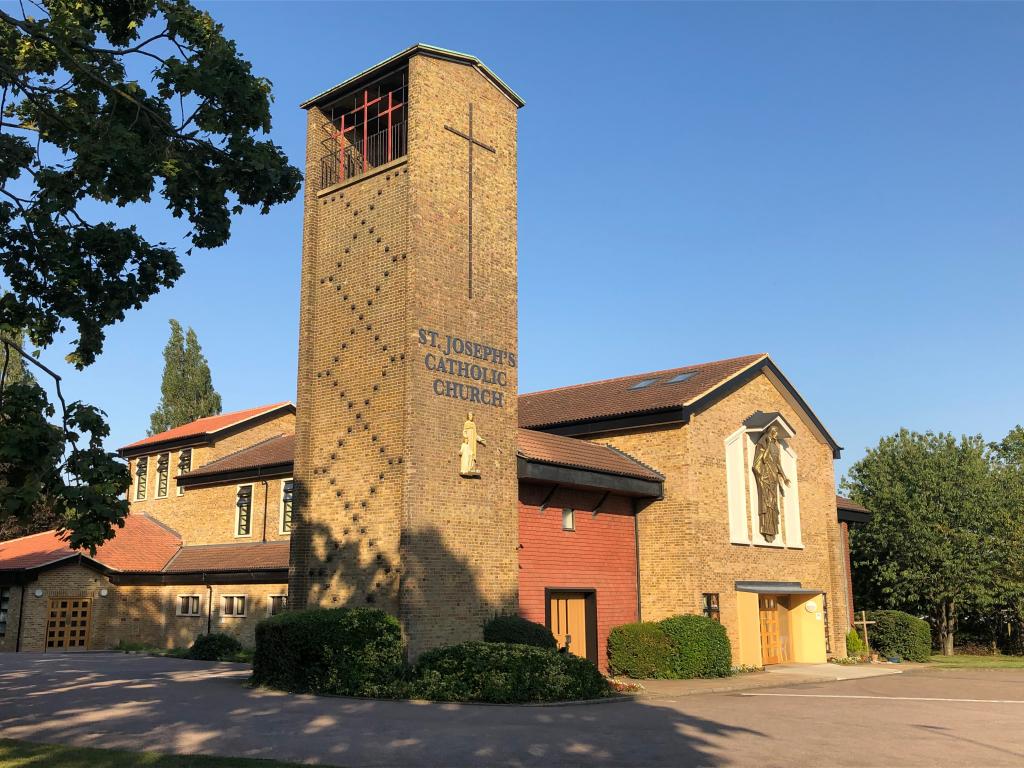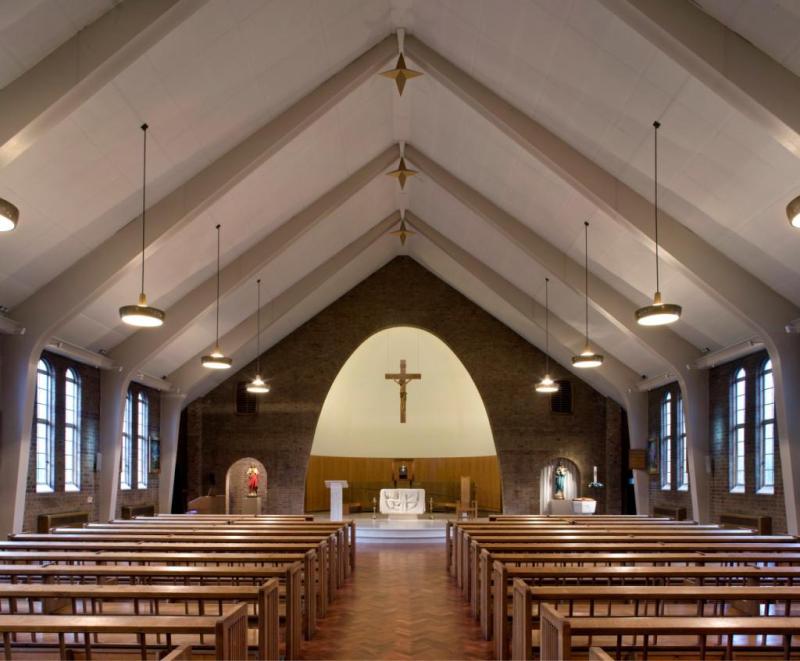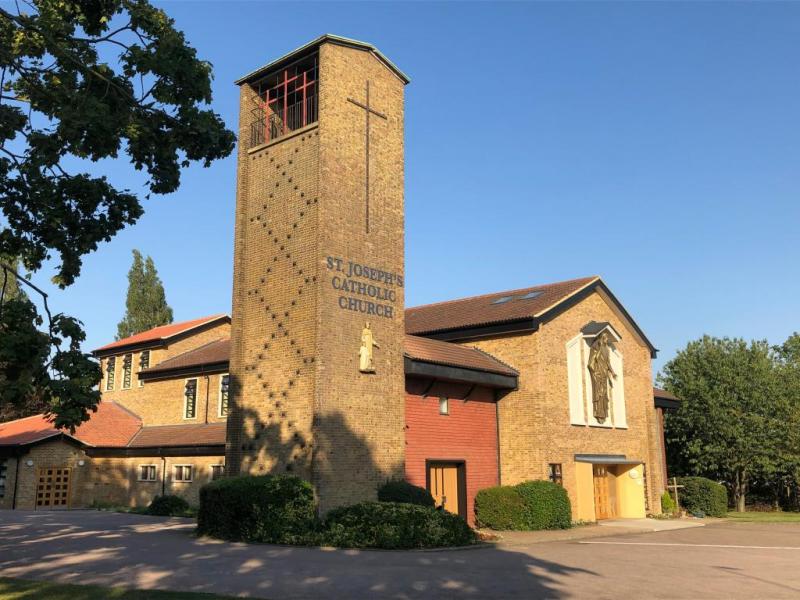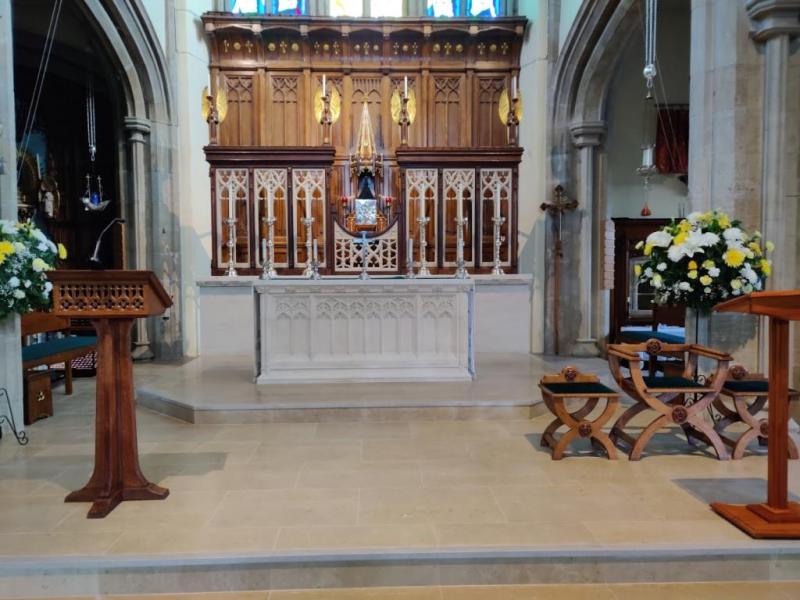Please click here for the complete document.
When churches are built, let great care be taken that they are well suited to celebrating liturgical services and to bringing about the active participation of the faithful. Sacrosanctum Concilium 126
The Diocesan Art and Architecture Committee has been established by the Cardinal as a committee of the Diocesan Liturgy Commission to assist him with his responsibilities concerning the churches of the Diocese.
All who are involved in the construction, restoration, and remodelling of sacred buildings are to consult the diocesan Commission on the Sacred Liturgy and Sacred Art. The diocesan Bishop, moreover, is to use the counsel and help of this commission whenever it comes to laying down norms on this matter, approving plans for new buildings, and making decisions on the more important issues. General Instruction of the Roman Missal 291
Westminster Diocese has a long and rich tradition of church building, covering nearly 300 years. These churches are works of faith designed to enable the worthy celebration of the liturgy, and themselves to encourage men and women to raise their minds and hearts to God.
Nearly every parish church has a long and venerated history It has been the place for countless sacramental celebrations, and will have a place in the hearts of the families and individuals who have worshipped there in times of joy and times of sorrow. All churches need to be treated with the greatest of respect.
Churches will also require work done on them from time to time. Sometimes this will be simply to maintain the fabric of the building, sometimes because there is need to adapt to changing circumstances. The Art and Architecture Committee should always be consulted where there are changes to a church building which does not involve replacement of like with like. Changes to the decoration, the fittings or the lighting of a church, as well as to the liturgical arrangements can have a significant impact on how the environment provided by the church contributes to the worship of the community of faith that gathers there.
One regular reason for work being considered in a church is the recognition that the contemporary liturgy makes distinctive demands on church buildings in comparison to those demanded even forty or fifty years ago. These demands are not limited to alternative arrangements of the sanctuary — in particular they also affect the processional areas of the church, the places dedicated to the sacraments of baptism and reconciliation, and the place of entry into the church.
The Committee and the Liturgy Commission are available to advise and assist parishes with processes of formation and information at any stage of a particular project. Both bodies strongly recommend that these processes be engaged with as soon as thought is being given to change.
Whenever change is being proposed, there needs to be reasoned argument as to why it is necessary; and what it is intended to achieve. Many churches have been reordered, for example, in recent decades. Sometimes that reordering has not been entirely satisfactory and corrective work may be necessary. However one of the important qualities to be achieved in liturgical space is a sense of permanence. In particular where a reordering of a reordering is proposed, every effort needs to be taken to ensure that the new arrangement will be more satisfactory and will give the impression of permanence.
Always priority should be given to quality of design and the quality of workmanship. Churches are designed to serve for generations and any work in carried out in them should also meet the same expectations. Church commissions whether architectural or artistic should steer a middle course between the desire to save money, and the desire for extravagance.
In many cases it will be clear that permission to proceed with a particular work can be given readily and straightforwardly.
In other cases a somewhat longer and more formal process of approval needs to be undertaken. Except when strictly ‘like for like’ work is being proposed, this will always be the case with listed buildings, for which approval needs to be obtained not only from the Art and Architecture Committee but also from the Historic Churches Committee, which has statutory authority regarding listed buildings.
Incomplete or inadequate submissions cannot be agreed by the Committee. In order to avoid unnecessary delays parishes are invited to make contact with the Chairman of the Art and Architecture Committee at the earliest opportunity. This will enable a first discussion of the project, and allow him to offer guidance as to how the project may best be pursued, and the Committee’s expectations.
All change has to be handled with sensitivity and should not be a matter for the parish priest alone. The Art and Architecture Committee will expect to see in formal submissions for work to be carried out evidence that the work has been considered also by the parish Finance Committee. Where work involves changes to the liturgical space in particular the Art and Architecture Committee will expect to see evidence of a broader consultation with the parish as a whole.
In 2006 the Committee will meet on 6th February 8th May and the 4th September. These dates have been chosen to coordinate with meetings of the Diocesan Historic Churches Committee. Dates for 2007 and subsequent years will be posted on the Diocesan website as and when they are confirmed.
The Liturgy Commission and the Art and Architecture Committee are available, not only for the assistance of the Cardinal, but also for the assistance of the clergy and lay faithful of the parishes of the Diocese. Their members are eager to be of help in any way that they can.
Fr. Allen Morris
Chairman
Diocesan Liturgy Commission
Fr. Peter Newby
Chairman
Diocesan Art and Architecture Committee



